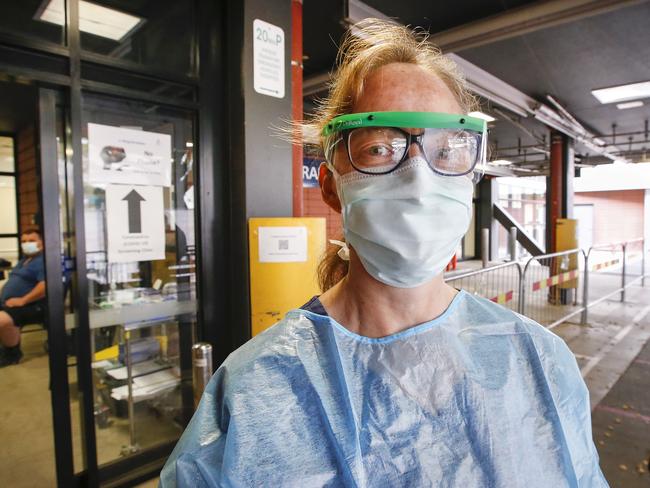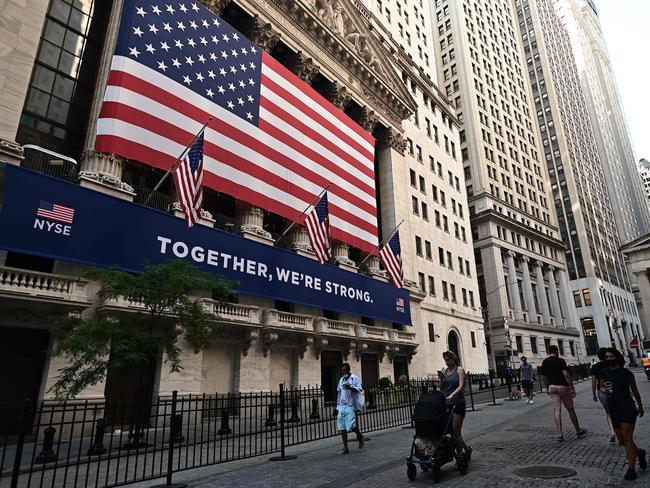Terry McCrann: Plenty of sideways movement ahead for the economy
The world economy isn’t heading back to the depths of recession. But what happens on Wall Street and in Washington has as much bearing on Australia as any second virus wave outside of Victoria, writes Terry McCrann.
Terry McCrann
Don't miss out on the headlines from Terry McCrann. Followed categories will be added to My News.
Like Victoria’s all-on-its-own disaster with the virus, on the economic and investment fronts we’ve entered a sort of limbo period, waiting to see which way everything breaks.
Both locally and globally, both national economies and world markets went over the cliff in the March quarter and then promptly snapped back varying amounts of some of the way in the June quarter.
July has then been a month of essentially going sideways. In effect, “waiting to see” which way things will break from this point.
As the world tentatively moves to open up — just about everywhere, seemingly except Victoria — will we get a second wave? If so, will these other places “do a Victoria” and move to their Lockdowns 2.0? Clearly that would threaten to spark another plunge in share markets; would threaten to turn the “V-shaped” economic recovery into the start of a “W”.
Or will we actually begin to sustainably emerge from all this? Even if that doesn’t mean we’ve gone close to “killing the virus”?
The first — bad news break — is actually the more predictable in terms of where it would lead: individual economies and perhaps the world going straight back into recession; markets heading south again.

For the obvious good, while it’s the more predictable it’s also the less likely; maybe even considerably less likely.
So the good news that we probably won’t go back to the fear and loathing and economic and market catastrophes of March-April, also sets us up for a far more unpredictable — and likely volatile — future.
As is always the case, the two places to watch are Wall Street and Washington.
What happens on Wall Street will drive our market.
What happens in Washington — and I’m thinking more of what the Fed does with money and what the Congress does with more stimulus than the politics and in particular the countdown to and the event on November 3 — will drive the US economy and add to what happens on Wall Street.
Now, late in May, I suggested that Wall Street had reached something of a pause point after it went above 25,000.
Since then it’s gone about 5 per cent higher — a combination of the tech stocks surging further and the rest of the market broadly stable.
Something similar has been the case here; except that because we don’t have the depths or the size of the Amazons and the Googles — Afterpay and Kogan are not quite in the same league — our market overall has gone sideways.
Wall Street would have to go much more broadly and sustainably higher to drag our market up away from the 6000-or-so level.
With both the Fed and Congress having done so much to get it up to these levels, absent very clear evidence that the virus was under control and the US economy could be allowed to surge off the back of so much stimulus, Wall Street is likely to trend sideways with an identifiable — but not dramatic — risk of going south again.

Absent a catastrophic virus second wave, the world economy is not going back to the depths of the recession. But it is also not going back anytime soon to the “peaks”, so to speak, plus normal growth from January-February.
The question for businesses and for jobs in the aggregate, is whether our economy gets back to something in the 95-97 per cent Jan-Feb level or to 100 per cent (so, no growth over a year).
At the moment we are back around perhaps 93-95 per cent of the pre-virus level, heading for 95 per cent-plus — before Victoria, one-quarter of the national economy, stuffed things. If Victoria comes out of lockdown after six weeks, we can get back up there.
If Victoria stays in lockdown longer the entire economy will slip. If other states — and especially NSW — were to join it, well, that would not be good.
Importantly and unpleasantly, the recovery in jobs will lag the recovery in the economy overall.
Businesses coming back from the brink — the ones that are still alive to come back — will want to do more with less labour costs; will have to do more with less labour.

Plus, there are the changes that have happened via the lockdown to labour-intensive and face-to-face jobs. The virus has kicked us all into the broadband future.
As to Thursday’s budget update, it was essentially a non-event. It didn’t tell us anything we didn’t know — that recession and massive government spending has sent it into deep deficit.
It did not tell us that we are going to stay in deep deficit well into (in my judgment, all the way through) the 2020s.
Does the government and Treasury have any idea of a long-term strategy around minimising the costs of those deficits? Other than borrowing money very cheaply at the moment?
Not that anyone can see.
The forecasts for the economy were meaningless in their exactitude as a guide to anything real.
Originally published as Terry McCrann: Plenty of sideways movement ahead for the economy
